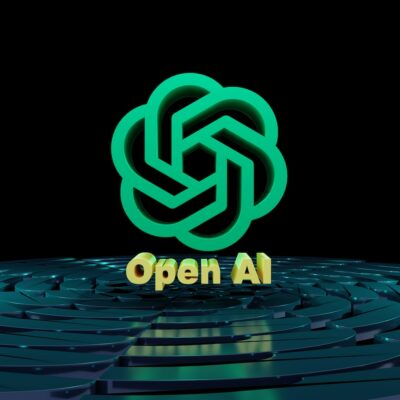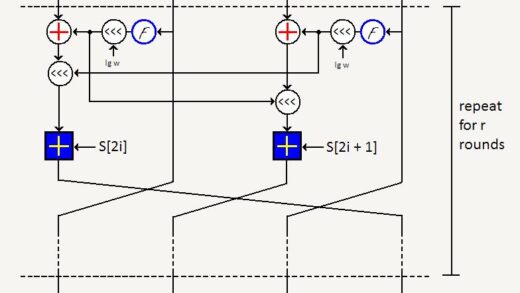In today’s world, modelling and simulation (M&S) have become indispensable tools in a wide range of fields, including engineering, healthcare, economics, and environmental sciences. These tools allow us to create representations of complex systems and to simulate different scenarios in a controlled and computational environment. In this article, we will explore the foundations of modelling and simulation, with a focus on two key concepts: discrete event simulations and iterative systems. While these might sound like technical terms, the goal here is to break them down into approachable concepts, particularly for those without a computer science background.
What is Modelling and Simulation?
At its core, modelling is the process of creating a representation (or model) of a real-world system or phenomenon. This model can take many forms, from mathematical equations to digital replicas, and aims to capture the essential characteristics of the system being studied.
Simulation, on the other hand, is the process of using this model to run experiments and observe how the system behaves under different conditions. A simulation allows us to analyse the outcomes without having to test them in the real world, which can often be expensive, dangerous, or impractical. For example, simulating the effects of a flood on a city’s infrastructure is far safer and cheaper than causing an actual flood.
Discrete Event Simulations (DES)
Discrete event simulation (DES) is a powerful method used to model systems where changes occur at specific moments in time, as opposed to continuously. In a DES, the system transitions from one state to another based on the occurrence of discrete events, such as a customer arriving at a checkout queue or a machine breaking down in a factory.
The core idea behind DES is that not all parts of a system change at every moment; instead, changes happen at distinct times when specific events take place. The system remains in a stable state between these events, with changes only occurring when an event is triggered. These events are often random or follow probabilistic distributions.
Example of Discrete Event Simulation
Imagine a supermarket with several checkout counters. Customers arrive randomly, and the time it takes for them to complete their purchases varies. In this situation, a DES can be used to simulate different scenarios, such as varying the number of checkout counters or changing the arrival rate of customers. The events in this simulation would be things like “customer arrival” and “customer checkout completion.”
By using a DES, we can answer important questions like:
- How long will the average customer wait in line?
- How many checkout counters are needed to keep the wait time below a certain threshold?
- What happens if customer arrivals suddenly spike during a sale?
The system is not continuously changing; instead, it only changes when these discrete events occur, making DES particularly useful for scenarios where there are distinct, significant moments that affect the system’s state.
Advantages of DES
One of the primary advantages of discrete event simulation is that it is highly efficient in simulating complex systems. Because the simulation only needs to process events when they happen (rather than simulating every second of time), it can handle larger systems with fewer computational resources. Moreover, DES provides insight into how different events interact within a system, which can be critical for identifying bottlenecks, delays, or inefficiencies.
For example, in healthcare, DES can be used to model patient flow through a hospital to optimise resource allocation, such as the number of available beds or the staffing levels of doctors and nurses. In logistics, it can help determine the best way to manage supply chains by simulating delays, transportation times, and inventory levels.
Iterative Systems
While DES focuses on discrete events, iterative systems are based on a continuous process of updating and recalculating system states through repeated iterations. In these systems, time progresses in regular intervals, and the system’s state is updated at each step. This type of system is used to model processes that change continuously over time or that evolve through a series of iterations.
In an iterative system, the state of the system at each step depends on its state in the previous step, making it a time-evolving process. These systems are often used in computational models for physics, economics, and biology, where change occurs gradually but continuously.
Example of Iterative Systems
Consider the process of simulating the spread of an infectious disease. In this scenario, an iterative system could be used to model how the disease spreads from one individual to another over time. The simulation would involve repeatedly updating the number of infected people based on factors such as transmission rates, recovery rates, and the population’s interactions. At each iteration, the system recalculates the number of new infections based on the current state of the disease’s spread.
Through this iterative process, we can explore different scenarios, such as the impact of vaccination strategies or social distancing measures, by running simulations that progressively update the state of the system over time.
Advantages of Iterative Systems
Iterative systems are particularly useful for capturing continuous processes and can be applied to a wide range of real-world problems. One of their strengths is their ability to handle nonlinear relationships, where changes in the system do not follow a straightforward, linear path. For example, in environmental models, small changes in one part of the system (such as a slight increase in temperature) can lead to larger, disproportionate effects over time, which an iterative system can capture.
Another benefit is the ability to run “what-if” scenarios, where different parameters can be adjusted to observe how they affect the system’s evolution. This is especially valuable in policy-making and strategic planning, where decision-makers need to understand the potential outcomes of various interventions.
The Computational Foundation: Algorithms and Data Structures
Both discrete event simulations and iterative systems are built on a foundation of algorithms and data structures. An algorithm is a set of rules or procedures that dictate how the simulation will progress, while data structures are the ways in which information is stored and organised.
In DES, a common algorithm is the event scheduling algorithm. It works by maintaining a list of future events, each with a time at which it will occur. The simulation processes events in chronological order, updating the system’s state after each event. This method is highly efficient because the system only needs to update when an event occurs, rather than at every moment in time.
In iterative systems, algorithms such as finite difference methods or agent-based models are often used. These algorithms repeatedly update the state of the system by applying mathematical rules at each iteration. The computational challenge lies in ensuring that the updates are accurate and that the system evolves in a realistic manner over time.
Modelling and simulation provide powerful tools for understanding and analysing complex systems in fields ranging from healthcare to logistics and environmental management. Discrete event simulations are particularly effective for modelling systems where changes occur at specific moments in time, while iterative systems are well-suited for processes that evolve continuously.
Though these techniques rely on advanced algorithms and computational methods, their real power lies in their ability to answer important questions about how systems behave and how they can be optimised. By breaking down these foundational concepts, it becomes clear that M&S has a wide range of applications that can benefit industries and decision-makers alike, even for those without a computer science background.
Further reading on modelling and simulation:
- Introduction to Modelling and Simulation using MATLAB and Python
Introduction to Modeling and Simulation with MATLAB and Python – MATLAB & Simulink Books (mathworks.com) - Discrete Event Simulation – An Introduction
A gentle introduction to discrete-event simulation | Software Solutions Studio (softwaresim.com) - Iterative Methods for Linear Systems
https://www-users.cs.umn.edu/~saad/IterMethBook_2ndEd.pdf - What is Simulation?
What Is Data Simulation? | Benefits & Modeling – Datamation
These should provide a deeper understanding of both discrete event and iterative system simulations.
Here are some practical uses of modelling and simulation in UK healthcare, particularly within the procurement or supply chain environment:
1. Optimising Inventory Management in Hospitals
Modelling and simulation are used to manage and optimise inventory levels for essential medical supplies such as pharmaceuticals, personal protective equipment (PPE), and surgical instruments. A Discrete Event Simulation (DES) can model the flow of medical supplies from suppliers to hospital stockrooms and, ultimately, to patients or healthcare professionals. By simulating various scenarios (e.g., increased demand due to a pandemic), hospital procurement teams can ensure that they maintain optimal stock levels without overstocking or running into shortages. This helps reduce costs, prevent wastage of perishable items like drugs, and ensure that critical supplies are always available.
2. Streamlining Procurement and Distribution of Medical Devices
Healthcare organisations, particularly in the NHS, use simulation to improve the procurement and distribution of medical devices such as ventilators, diagnostic machines, or surgical tools. Iterative simulation models are used to predict how changes in supplier lead times or changes in demand (e.g., during an unexpected health crisis) affect the supply chain. By running simulations, procurement teams can identify bottlenecks, optimise delivery routes, and assess the best suppliers. This helps ensure that the right devices reach hospitals or clinics on time, minimising delays that could impact patient care.
3. Improving the Supply Chain for Blood Products
The UK’s National Health Service Blood and Transplant (NHSBT) services use simulation models to manage the supply chain for blood and blood products. Discrete event simulations help in understanding the supply, demand, and distribution of blood to hospitals. Since blood products have a limited shelf life, simulations can help balance collection, processing, storage, and delivery. The system can predict demand spikes (e.g., in emergencies or surgeries) and help procurement teams ensure an uninterrupted supply chain while minimising waste due to expiration.
These applications show how modelling and simulation help enhance efficiency, reduce costs, and ensure that critical medical supplies are always available when needed in the UK healthcare system.








